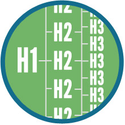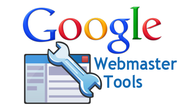-
About
- About Listly
- Community & Support
- Howto
- Chrome Extension
- Bookmarklet
- WordPress Plugin
- Listly Premium
- Privacy
- Terms
- DMCA Copyright
- © 2010-2025 Boomy Labs

 Jonathan Malcolm Lewis
Jonathan Malcolm Lewis
Listly by Jonathan Malcolm Lewis
There are many different areas of SEO which determine your site's effectiveness. This list will list out a few - vote on the ones which you think are important and add any of your own which may have been missed.
Source: http://creativeagencysecrets.com/the-dos-and-donts-of-seo-the-easiest-way-to-appear-on-google/

Page titles should define in a few words the content of the page. Effective page titles draw visitors to your site and give an indication to search engines the context of the page’s content.
Do: Choose a title that effectively communicates the topic of the page’s content
Don’t: Choose vague titles that have no relation to the content on the page or a default title such as “New Page 1”.

Metatags and descriptions allow you to describe and/or summarise your pages content. Descriptions will be the snippet provided by google to help the visitor determine the value of the page before opening it. The text in the red box below is what the user sees.
Do: Write a description that would both inform and interest users if they saw your description as a snippet in a search result.
Don’t: Write generic descriptions or use only keywords. Although no longer common, people have been known to paste an entire paragraph as the description.
Don’t: Repeat the same tags and descriptions across multiple pages.

*Changing your URL structure is not a small job! If it is ok currently then leave it as is.
Page URLs are often a difficult thing to effectively change if you’ve got a large website and/or have been using it heavily for a while. The reason for this is by changing the structure, all previous links will no longer work. The quick fix is of course to set up a redirect however this is far from ideal – to best utilise your site’s existing SEO capabilities you would have to correct all of the links. You’d probably still have to set up a redirect anyway as external sites linking to your page would also stop working.
Do: Your URL should contain words which are both relevant to your site and the individual page the URL links to.
Don’t: Choose generic page names such as “page1.html”
Don’t: Use unnecessary parameters/ID numbers
Don’t: Use excessive keywords, else risk getting the individual URL or even the whole site banned by Google.

The menus on your site help visitors navigate your site. They also provide a template for creating an effective XML Sitemap which will help bots crawl your site. Having an effective menu layout is a win-win situation.
Do: Create a natural flowing hierarchy which makes it as easy as possible for visitors to navigate your site.
Do: Use text for navigation as often as possible – not everything has to be in a dropdown menu! (what this means is that often you can navigate visitors to other pages effectively using text on the page as opposed to everything being exclusively in the menu)
Do: Submit an up to date XML Sitemap to Google for both your main site and any mobile sites you may have – (update regularly)
Do: Have a useful 404 page. Many 404 pages simply have an error. Include a link back to a useful page such as your home page or main news page.
Don’t: Create a difficult, complex linking structure by either linking to too many things (that the visitor is unclear what to click) or by breaking your content up (so to increase number of pages but the visitor has to visit multiple pages unnecessarily)
Don’t: Have a navigation system based entirely on dropdown menus. As mentioned before, not only can this be frustrating for the user, it also has adverse SEO consequences.

Obvious really – the DON’Ts however will explain how Google can punish you for making your content hard to read.
Do: Write content that is easy to follow, concise and organised by using formatting options such as headings, bullet points etc
Do: Create fresh, unique content which is designed for your users, not search engines.
Don’t: Overuse headings/bolds/italics etc
Don’t: Use pictures to replace words. Pictures aren’t read by search engines which reduces SEO friendliness. Pictures also make it difficult for readers to copy/paste from your site (which although you might think this is a good thing, many would argue that the purpose of the internet is to share information).
Don’t: Deceptively hide text from users but displaying it to search engines (Such as having white text on a white background).

Links on your page (both internal and external) are an important way of guiding visitors around your site. They also however help Search Engines decipher the page’s content and purpose.
Do: Try and describe what the link is linking to in the text. Hyperlinking keywords or phrases which define the link’s purpose will both help your visitor and Search Engines know what the link is pointing to.
Do: Format links so they are easy to spot (don’t try and trick visitors into thinking that normal text is actually a link). This means highlight them with a different colour.
Don’t: Use generic anchor text such as “click here”.

Images help beautify a site. They also slow down loading speed so only use them sparingly and avoid using high-definition photos unless needed. Slow sites appear lower on Google’s search results.
Do: Use brief, descriptive filenames and alt text. This will help search engines know what the picture is about and will serve a double purpose if the picture doesn’t load, the visitor will know what should’ve been there.
Do: Supply alt text when using images as links. Similar to what was said in the Link section of this article to help describe the link.
Do: Supply an updated image sitemap file
Don’t: Stuff keywords into the alt text – it can get you blacklisted from Google!
Don’t: Use only images as links for your site’s navigation
Don’t: Overuse high-def images as this will significantly reduce site speed

Headings should be used to help visitors scan your page for the applicable information. Avoid using them for unimportant content.
Do: Use headings as an outline – the reader should be able to read just the headings and have a clear understanding of what the page is about.
Don’t: Place headings that don’t help clarify the page’s structure and summarise the page’s content
Don’t: Erratically change heading tag sizes or put all of the page’s text into a heading tag.
Don’t: Use heading styles when italics or bolding may be more appropriate

Robots.txt files tell search engines what to crawl and what to ignore. Used effectively, they can help bots crawl your pages more effectively and reduce spam. Used incorrectly – your whole site could disappear from Google. To find out more about Robots.txt files and how Google utilises them, check Google’s developer pages
Do: Have an up to date robots.txt file – perhaps even a second if you’re attempting to block ssl pages.
Don’t: Allow search result-like pages to be crawled.
Don’t: Allow URLs created by proxies to be crawled.

There are many ideas you can utilise to appear on Google. So long as you don’t spam or buy your links – you should be fine.
Do: Sign up for Google Places if appropriate to appear on Google Maps and web searches.
Do: Include your website URL in all of your online mailings (blogs, newsletters and social media posts).
Do: Guest blog and comment on other’s sites with links back to your own.
Don’t: Sign up for schemes where your content is artificially promoted to the top of selected services.
Don’t: Purchase links from another site with the aim of getting PageRank instead of traffic.
Don’t: Spam link requests to all sites related to your topic area.

Google’s Webmaster Tools are a great way of monitoring and optimising your site – USE IT!
Do: Use it regularly to keep up to date with how Google’s bots see your site and whether there are any issues which can be resolved to make your site appear higher.
Do: Rectify any issue which Webmaster tools suggests.
Do: Utilise analytics and other tools available to optimise the most visited pages and help navigate users around your site.
Don’t: Do anything reckless which you don’t fully understand – you could block your entire website from appearing on Google if care isn’t taken.

Keywords are an essential way of associating your page's content to the desired topic. Ideally of course, these keywords appear organically as you write as opposed to intentionally inserting them.
Do: Utilise keywords (buzzwords) when appropriate.
Do: Research the most searched keywords (Using tools such as Google Adword's Keyword Checker) to see which topics/keywords are searched more often than others.
Don't: Stuff your content with Keywords - It can get you punished by Google
Don't: Put in irellevant keywords
